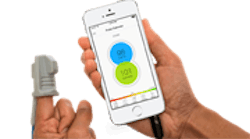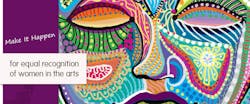There are differences between women and men in many different ways, including certain conditions and diseases. This article will review some of the latest studies regarding women’s health.
International Women’s Day
March 8th was International Women's Day 2015. (4) The 2015 theme was Make It Happen. The website is a worldwide source for sharing International Women's Day news, events, and resources, and explains that “International Women's Day . . . is a global day celebrating the economic, political and social achievements of women past, present and future.” (4) As part of the day, Flavia Bustreo, the WHO assistant director-general for family, women's, and children's Health, and vice chair of Gavi, the Vaccine Alliance Board, wrote about the 10 top health problems for women. Bustreo identified these problems as cancer, reproductive health, maternal health, HIV, sexually transmitted infections, violence against women, mental health, noncommunicable diseases, being young, and getting older.
WHO is developing a new global strategy for women's, children's, and adolescents' health, and working to preserve the health of women in the post-2015 United Nations' Sustainable Development Goals. This includes setting targets and indicators, and operationalizing pledges in the areas of policy, financing and action, to ensure that the future will bring health to all women and girls.
READ MORE | Pregnancy myths and the dental office debunked
Maternal and infant mortality
Although there have been improvements in care during pregnancy and childbirth, as many as 300,000 women died in 2013 from complications in pregnancy and childbirth. (1) Many of these deaths could have been avoided, had family planning and basic services been available. Recently, LionsGate, partners of Every Women Every Child, have developed an app to help decrease infant mortality. (2) The app plugs into hardware for hospital-standard measurements of blood oxygen and can predict preeclampsia in mothers-to-be with 80% accuracy. (2) It uses a technique known as pulse oximetry, which measures oxygen levels through a light sensor attached to a person’s fingertip. Professionals have confidence that the new app will withstand the momentum the international community has built around improving maternal health in developing countries. Click here for a white paper from LionsGate on this and similar technologies.
Menopause, bone fractures, and periodontal disease
A previous issue of this newsletter covered a link between bone fractures in postmenopausal women and periodontal disease. Read our coverage on the Fracture Risk Assessment Tool and periodontal disease here.
Celebrating others
Lastly, I came across an interesting site, The Noticed Network. The mission of the website is to link people by encouraging them to notice and celebrate each other in an individual way. They suggest expressing to people the good things you have observed about them, and to give the person a physical reminder so they will be reminded frequently of the accolades they have received from you and of their own personal worth. The site sells a variety of products for one to give, and a portion of the profits are donated to charitable organizations. I am sure there are many other items one can give to someone to make them feel special; however, kind words, actions, and gestures are also appreciated, and are always free to give.
References
1. Velleman Y, Mason E, Graham W, et al. From join thinking to joint action: A call to action on improving water, sanitation, and hygiene for maternal and newborn health. PLoS Med. 2014;11:e1001771. doi: 10.1371/journal.pmed.1001771.
2. Smartphone app reads blood oxygen levels, forewarns of life-threatening pre-eclampsia. Kurzweil. http://www.kurzweilai.net/smartphone-app-reads-blood-oxygen-levels-forewarns-of-life-threatening-pre-eclampsia. Published March 14, 2014. Accessed April 14, 2015.









